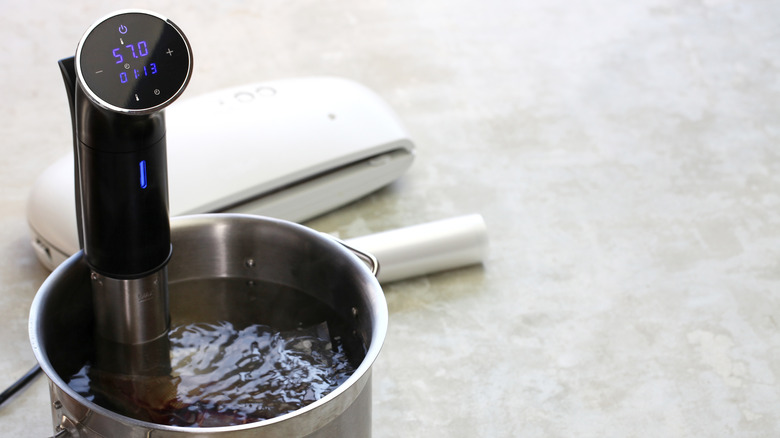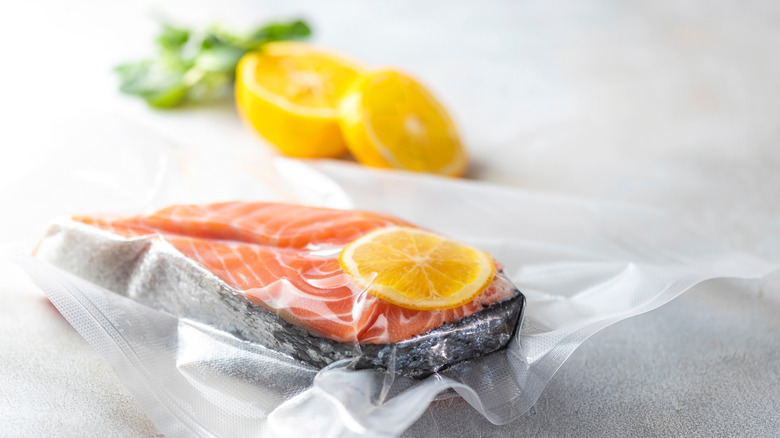Why Your Sous Vide Bag Is Floating
If you've ever tried your hand at sous vide cooking, you know the precision cooking technique can be difficult to do correctly. Whether it's the quantity of water, cooking time, or water bath temperature, there are many small ways your sous vide operation can go off the rails, and leave you with precision-cooked, though overcooked, meat.
As Delishably has laid out in a post on the subject, one of the most common sous vide struggles involves the sous vide bag itself: sous vide pouches that are not air-tight are unable to submerge fully, and will float to the surface of the sous vide pot. The result is unevenly cooked meat: the point of the sous vide technique is to expose the meat, or whatever you're cooking, to a precise and consistent temperature on all sides. Using a precision-temperature water bath gives you greater control over the actual cooking process, and if you have determined the correct temperature and cooking time, sous vide cooking gives you a greater consistency of results compared to other methods of cooking (via ANOVA). But those benefits go out the window if your sous vide bag doesn't lie flat, which is why mastering submersion is important for anyone attempting this technique.
The importance of an airtight seal
In order to guarantee your sous vide bag submerges fully, make sure you've let all of the air out of it before placing it in the water bath. Unreleased air, trapped in the sealable pouch/bag, will have your sous vide bag floating to the surface of the water bath and cooking unevenly. It can be difficult to achieve a vacuum-tight seal, but as Delishably has usefully shown, there are a few solutions to this problem.
If you have access to a vacuum sealer, this will be your first port of call, as vacuum sealers will most reliably get all of the air out of your sous vide bag. If you're on a budget, though, you can go the old-fashioned water displacement route: simply dunk your sous vide bag in a bucket, and allow the air, displaced by the water, to work its way out of the top of the bag. This might not get you a guaranteed vacuum-tight seal, but it's the next best thing.
The last solution is to simply attach a small weight to the top of the bag, and allow this to anchor your sous vide bag to the bottom of the water bath. And presto, you're back on track to a precision-temperature-cooked meal.

